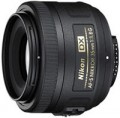Viewing angles
This parameter determines the size of the area of the scene being shot that falls into the frame. The wider the viewing angles, the larger the area the lens can capture in one shot. They are directly related to the focal length of the lens (see "Focal length"), and also depend on the size of the specific matrix with which the optics are used: for the same lens, the smaller the matrix, the smaller the viewing angles, and vice versa. On our website, in the characteristics of optics, viewing angles are usually indicated when used with the matrix for which the lens was originally designed (for more details, see "Matrix Size").
Min. diaphragm
Aperture is a design of several blades-curtains, which allows, if necessary, to reduce the diameter of the active aperture of the lens, actually reducing its aperture (for more details, see "Aperture"). In addition to reducing the light output (which can be relevant, for example, in bright sunlight), closing the aperture has another effect — it increases the depth of field. In other words, “in focus” is a larger volume of space than with an open aperture.
The values on the aperture scale are usually selected from a standard range. The numbers in it actually indicate what aperture the lens will have when the aperture is closed to a given value: for example, an aperture value of 5.6 will correspond to f / 5.6 aperture. The larger the number indicating the minimum aperture value, the more options the photographer has and, accordingly, the possibilities for setting the shooting mode (ceteris paribus).
Minimum focus distance
Minimum focus distance (m) - the smallest distance from which you can focus on an object and take a photo. Usually it ranges from 20 cm for wide-angle lenses to several metres for telephoto. In the macro mode of the camera or with the help of macro lenses, this distance can be less than 1 centimeter.
Maximum zoom
The degree of magnification of the object being shot when using a
lens for macro shooting (that is, shooting small objects at the maximum possible approximation, when the distance to the subject is measured in millimetres). The degree of magnification in this case means the ratio of the size of the image of the object obtained on the matrix of the camera to the actual size of the object being shot. For example, with an object size of 15 mm and a magnification factor of 0.3, the image of this object on the matrix will have a size of 15x0.3=4.5 mm. With the same matrix size, the larger the magnification factor, the larger the image size of the object on the matrix, the more pixels fall on this object, respectively, the clearer the resulting image, the more details it can convey and the better the lens is suitable for macro photography. It is believed that in order to obtain macro shots of relatively acceptable quality, the magnification factor should be at least 0.25 – 0.3.
Sensor size
The size of the matrix for which the lens was originally designed.
The formats (and sizes) of modern matrices can be indicated diagonally in inches (1/1.8", 1/2.3" — in this case, the conditional "Visicon" inch is taken, which is about 17 mm), according to the actual dimensions (13.2x8.8 mm) or by symbol (APS-C, full frame). In general, the larger the sensor, the more advanced and expensive it is.
Among modern lenses, solutions for such matrix formats are most popular, in ascending order of size:
4/3(17.3x13 mm, used in cameras of the Four Thirds and Micro Four Thirds standards),
APS-C(23x15 mm with slight variations, SLR and MILC cameras of the middle class),
full frame(36x24 mm, the size of a standard film frame — advanced DSLRs),
big frame(anything larger than full frame — high-end professional cameras). Optics for other formats is somewhat less common.
Note that it is technically allowed to use with “non-native” sensors, however, in such cases, the performance characteristics of the optics will differ from those claimed. So, when installed on a smaller matrix (for example, a full frame lens on an APS-C camera), only a part of the image created by the lens will fall on such a sensor. As a result, the space that gets into the frame will be narrower, and the details in the frame will be larger, as if the focal
...length of the lens has increased (although it has remained unchanged, only the matrix has changed). And when installed on a larger sensor, the covered space will increase, the detail will decrease; in some cases, the size of the “picture” provided by the lens may simply not be enough for the entire area of the matrix, and the pictures will be obtained with black space around the edges.Design (elements/groups)
The number of elements (in fact, the number of lenses) included in the design of the lens, as well as the number of groups in which these elements are combined. Usually, the more elements provided in the design, the better the lens handles with distortions (aberrations) when light passes through it. On the other hand, numerous lenses increases the dimensions and weight of the optics, reduces light transmission (for more details, see "Aperture") and also puts forward increased requirements for the quality of processing, which affects the cost of the lens.
Filter diameter
Thread diameter for installation on the filter lens. Light filters are devices for changing the parameters of the light flux entering the lens. They can be used for highlighting individual colours, coloring the entire image in one colour, darkening the image, correcting colour temperature and light balance, shooting in the infrared range, etc. Also, a light filter can play the role of protection against pollution. For successful installation on the lens, the diameter of the filter must match the diameter of the filter specified for this model of optics.
